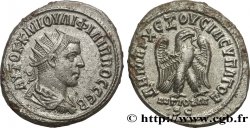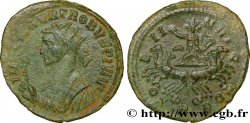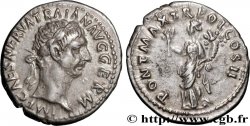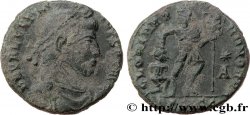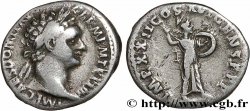v53_0034 - SICILY - SICULO-PUNIC - LILYBAION Tétradrachme
MONNAIES 53 (2012)
Starting price : 950.00 €
Estimate : 1 500.00 €
Realised price : 1 350.00 €
Number of bids : 2
Maximum bid : 1 500.00 €
Starting price : 950.00 €
Estimate : 1 500.00 €
Realised price : 1 350.00 €
Number of bids : 2
Maximum bid : 1 500.00 €
Type : Tétradrachme
Date: c. 325 AC.
Mint name / Town : Machanat (Le Camp), Lilybée
Metal : silver
Diameter : 25 mm
Orientation dies : 8 h.
Weight : 17,03 g.
Rarity : R1
Coments on the condition:
Exemplaire sur un flan légèrement irrégulier et éclaté à 4 heures, mais parfaitement centré avec le grènetis visible au revers. Très beau portrait de Melquart. Très joli revers avec un défaut de tranche à 12 heures. Jolie patine de collection ancienne gris foncé avec des reflets dorés. Conserve une partie de son brillant de frappe
Catalogue references :
Predigree :
Cet exemplaire provient de MONNAIES XVI, n° 18 et de la collection Claude Lainé (le monde de Carthage)
Obverse
Obverse legend : ANÉPIGRAPHE.
Obverse description : Tête de Melqart (Héraklès) imberbe à droite, coiffée de la léonté nouée sous le cou.
Reverse
Reverse legend : LETTRES PUNIQUES (MACHANAT).
Reverse description : Tête et cou de cheval à gauche ; derrière un palmier ; devant le cou du cheval, un épi de blé.
Commentary
Poids léger. Mêmes coins que les exemplaires des musées de Berlin, de Londres et de Paris. Même coin de droit que l’exemplaire MONNAIES XVI, n° 17. Petit défaut de coin caractéristique au droit au niveau de la dent de la léonté.
Light weight. Same dies as the examples in the Berlin, London and Paris museums. Same obverse die as the copy COINS XVI, No. 17. Small characteristic die defect on the obverse at the level of the lion's tooth
Light weight. Same dies as the examples in the Berlin, London and Paris museums. Same obverse die as the copy COINS XVI, No. 17. Small characteristic die defect on the obverse at the level of the lion's tooth








 Report a mistake
Report a mistake Print the page
Print the page Share my selection
Share my selection Ask a question
Ask a question Consign / sell
Consign / sell